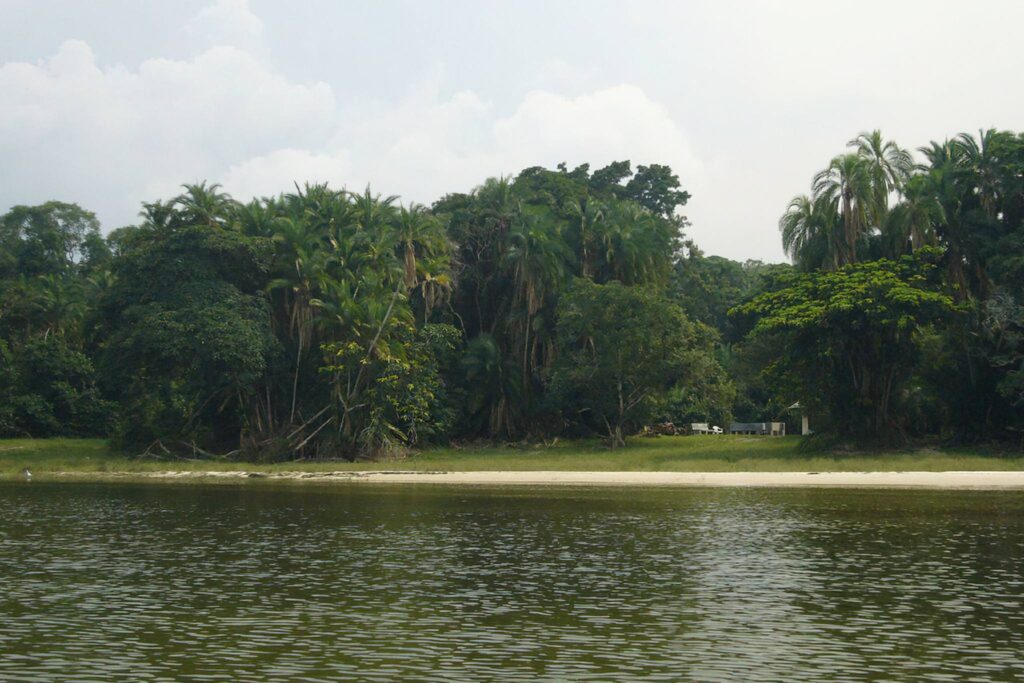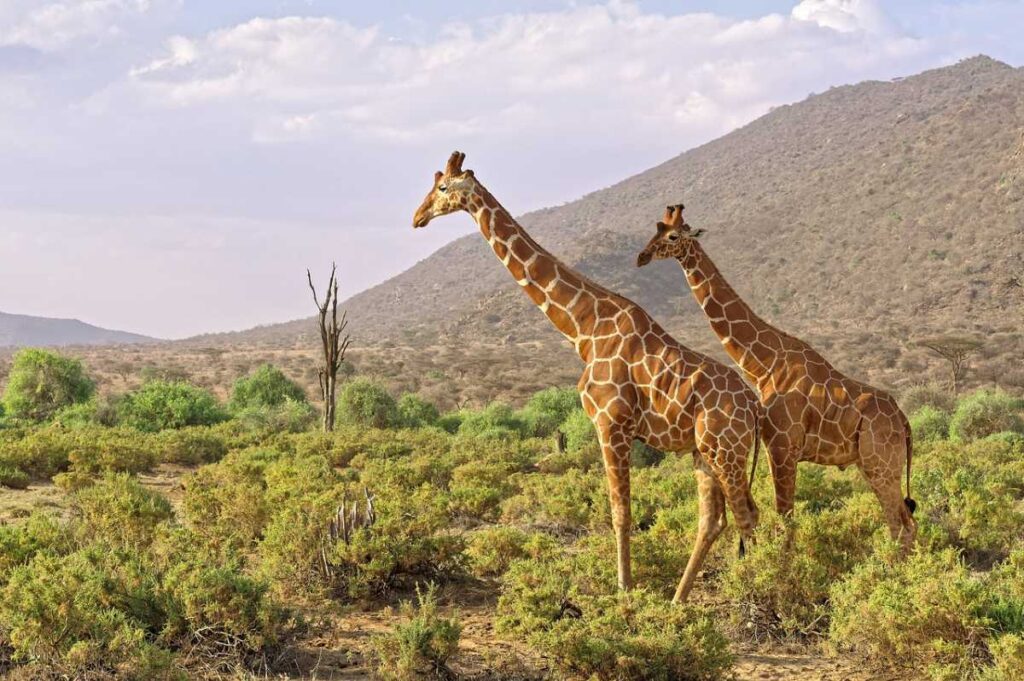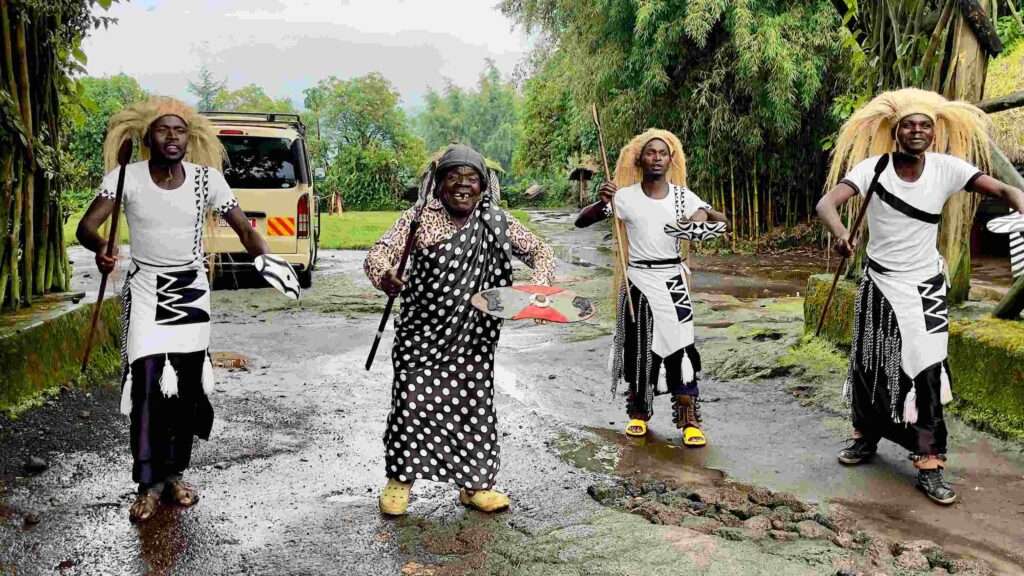the volcanoes
Inhabiting the world’s most loved and critically endangered creatures-the mountain gorillas, volcanoes national park is named after the massive chain of the dormant volcanoes that make up the virunga line of mountains, and these are-Muhabura, Gahinga, Bisoke, Sabinyo and Karisimbi (remarkably the highest at 4507m above sea level) The park covers an area of 160km2, located north west of the country. The park is famous for its rich biodiversity having a number thought after primate species like the golden monkeys it’s indeed the Gateway to the mountain gorillas.
Activities in Volcanoes National Park
Volcanoes National Park is a must-visit for any adventurer to Rwanda. This is Rwanda’s only national park where visitors can trek the endangered mountain gorillas. However, there’re numerous activities available to park visitors.
Mountain gorilla trekking
Tourists visiting Volcanoes National Park can do gorilla trekking, which is an exciting, thrilling, daring, and enjoyable experience. Visitors can track Volcanoes’ 10 Gorilla groups, which include 12 recognizable mountain Gorilla groups namely, Karisimbi, Sabinyo, Susa, Umubano, Amahoro, Agashya, Kwitonda, Hirwa, Bwenge, and Ugyenda, are among the gorilla families that tourists can marvel at.
Many walks and routes to view Gorilla groups are included in gorilla trekking excursions in national parks. It takes two to six hours trekking to the mountain gorillas in Volcanoes National Park, but visitors 60 minutes spent while viewing the adorable creatures. A trekking permit in the Volcanoes National Park costs $1500 per tourist and The Park’s gorilla trekking activities begin at 7:00 a.m. from the park headquarters in Kinigi. Typically, tourists are briefed before being divided into trekking groups of up to eight people per gorilla group. Only guests aged 15 and up are permitted to go gorilla trekking in the national park. The greatest period for visitors to trek the park’s mountain gorillas is between June and September, when the park is open.
Golden Monkey Trekking
Golden monkey trekking in the volcanoes can be combined with a gorilla trekking safari. Trekking the golden monkeys in Volcanoes National Park is a very exciting and adventurous activity that no visitor should miss. The park has two golden monkey troops and the biggest being in Sabinyo with about 80-100 individuals. However the other troop has more less members and found in the volcanoes. The golden monkey trekking activity starts at 7 AM, the same time as the gorilla trekking activity, meaning it is not possible to do both the activities at once. Visitors wishing to trek with the golden monkeys in Volcanoes National Park can purchase a trekking permit for $100 and enjoy the cute creatures. Volcanoes National Park is located in the Ruhengeri district of Rwanda’s eastern province and the national park is 113 kilometers from Kigali City, roughly a 2-hour drive from the capital city. Visitors to Volcanoes National Park can participate in a variety of activities provided by the park. Most tour operators will include gorilla trekking in Volcanoes National Park in most Rwanda safari vacation packages.
Hiking in the Volcanoes
Hiking and climbing volcanoes in Volcanoes National Park is a very enjoyable and rewarding activity for visitors who want to explore the scenery and beautiful scenery within the national park. Volcanoes National Park mainly offers hiking tours to Mount Karisimbi and Mount Bisoke.
Hiking to Mount Bisoke
Bisoke Mountain offers visitors breathtaking views of the mountains and the national park in general. Crater Lake, at the summit of Mount Bisoke, is the pinnacle of all hiking activities in the mountains. Climbing Mt. Bisoke takes about 6-8 hours, including 2 hours of descent. However, experienced climbers may find the descent takes less time. As with most hiking activities in Volcanoes National Park, hiking activities begin at the park’s headquarters in Kinigi at exactly 7:00 AM. Climbers are first briefed by a head ranger at the park before beginning their hiking activities. Visitors hiking Mount Bisoke can hire the services of porters to carry their luggage for an additional fee. A hike to Mount Bisoke in Volcanoes National Park is $75 per person per day. There are more fancy and challenging if you are unfit such as; Sabyinyo, Karisimbi, Gahinga and Muhabura mountains.
Diane Fosse’s Grave Hike
A trip to the burial place of famed primatologist Diane Fosse is a must-do when visiting Rwanda’s Volcanoes National Park. Diane’s hiking to her Fosse grave allows visitors to view where she was buried as well as hear about her efforts and dedication to safeguarding mountain gorillas in the national park. Visitors are also taken to the Karisoke Research Center, where Fossey conducted most of his research while at Volcanoes National Park.
Musanze Cave
is also accessible to visitors to Volcanoes National Park; These caves are ideally located near the park’s entrance. After going gorilla trekking in the park, visitors can explore the cave. The Musanze Caves are caving and hiking in Volcanoes National Park. The Musanze Caves walk in the Volcanoes costs $50. Visitors trekking to Musanze Cave are given a tour of the cave, which extends 2 kilometers below the surface. The vast number of bats that reside in the cave’s dark ceiling is one of the cave’s attractions. Gloves, kneecaps, boots, facemasks, helmets, and head caps are provided to tourists who enter the caves. A comprehensive tour of the cave takes about 2-3 hours and provides visitors with insight into Rwandan history and culture.
Best time to visit volcanoes National park
Volcanoes National Park is breathtakingly beautiful. Its diversified habitat includes a variety of forest plants, including bamboo, as well as cleared hillsides and lakes. At any time of the year, it’s a pleasure to spend your vacation in this magnificent spot. Due to its high elevation, Rwanda has a colder climate than many other African countries. Volcanoes Park is best visited during the dry season, which runs from June to August and to a lesser extent September, January to February when the maximum temperature is 25–27°C during the day and dips to 13.5–15.5°C at night. Our trip advisor suggests carrying thick clothing because the temperature in the mountains may get rather cool in the evenings and early mornings.
Dry seasons
Dry seasons are an ideal for hikers because the trails are drier and less swampy than during the wet seasons when they become drowsy, swampy, and difficult to navigate. However, the wet seasons offer their own advantages as well such as a specific Virunga likely to meet his mountain gorilla family. We recommend scheduling your primate adventure during the wet season.
Gorillas prefer staying on the lower slopes during rainy days and this makes it easy to track them. This time of year, food is abundant, and gorillas don’t have to travel far to locate their favorites: tender bamboo shoots, nettles, wild fruits, wild celery, and other plants. Within an hour or two of your trek, you should be able to locate your assigned gorilla family. However, due to damp circumstances, the track might be challenging to navigate. For bird watchers, the rainy season is the perfect time for you as food is plentiful and sunny days with no rain offer great chances of spotting a variety of species.
preferences
A lot of travellers who want to go for gorillas, golden monkey trekking and other hiking adventures in Rwanda select the dry months to visit Volcanoes National Park. However, rainy seasons are also recommended for the adventurers and those wanting to have short hikes due to cold conditions and plenty of food that enables the primates not to move a lot preferring lower slopes. With that in mind, you can consider traveling between late February and May, which coincides with Rwanda’s long rains, and October and November, which coincide with the short rains. You can also arrange your trip in the interim. The benefit of visiting during the rainy season is that there are fewer visitors. As a result, certain Volcano Park lodgings provide savings through us.
The lengthy dry season corresponds to summer in the northern hemisphere. Because most schools in Europe and North America are closed for the summer, families with older children are more likely to organize safari adventures to Africa around this time of year. During the winter months, northern visitors choose to arrange excursions to southern nations that are warmer, resulting in a greater influx to Rwanda. Volcanoes National Park, no matter what time of year you visit, will awe you with its breathtaking beauty and friendly residents.









